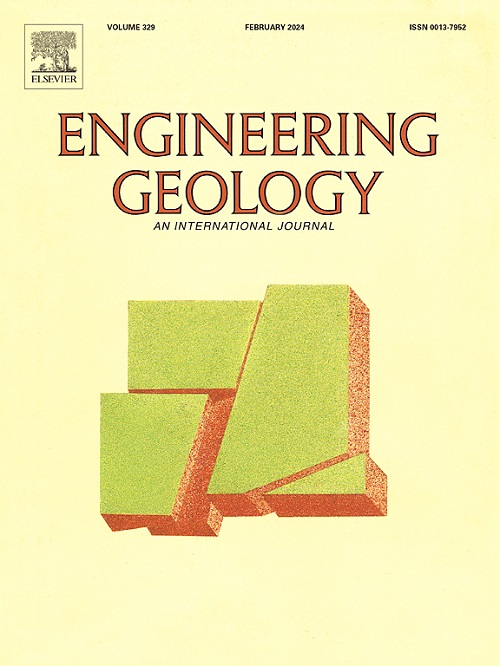Non-local μ(I) rheology improves landslide deposition modeling in MLS-MPM simulations
IF 6.9
1区 工程技术
Q1 ENGINEERING, GEOLOGICAL
引用次数: 0
Abstract
Gaining insights into landslide deposits form can help achieve a better understanding of the overall landslide dynamics. Previous studies have focused on understanding global characteristics of the runout process and final deposit, without attempting to comprehend the deposition process and the underlying mechanisms. Here, we employed a combination of flume experiments and numerical simulations based on the material point method (MPM) to investigate the influence of friction on the characteristics of rock avalanche deposits and gain a deeper understanding of the mechanisms involved. MPM simulations have generally relied on simple soil constitutive models, which cannot capture the rate-, pressure-, and size-dependent characteristics of geomaterials. Thus, we adopted a viscoplastic non-local μ(I) rheology model, which has been proven to be able to reproduce depositional characteristics with high accuracy. We identified two stages during deposition, namely a translational stage, primarily influenced by the basal frictional resistance, and a subsequent impact shear stage, governed by the internal frictional resistance.
求助全文
约1分钟内获得全文
求助全文
来源期刊

Engineering Geology
地学-地球科学综合
CiteScore
13.70
自引率
12.20%
发文量
327
审稿时长
5.6 months
期刊介绍:
Engineering Geology, an international interdisciplinary journal, serves as a bridge between earth sciences and engineering, focusing on geological and geotechnical engineering. It welcomes studies with relevance to engineering, environmental concerns, and safety, catering to engineering geologists with backgrounds in geology or civil/mining engineering. Topics include applied geomorphology, structural geology, geophysics, geochemistry, environmental geology, hydrogeology, land use planning, natural hazards, remote sensing, soil and rock mechanics, and applied geotechnical engineering. The journal provides a platform for research at the intersection of geology and engineering disciplines.
 求助内容:
求助内容: 应助结果提醒方式:
应助结果提醒方式:


